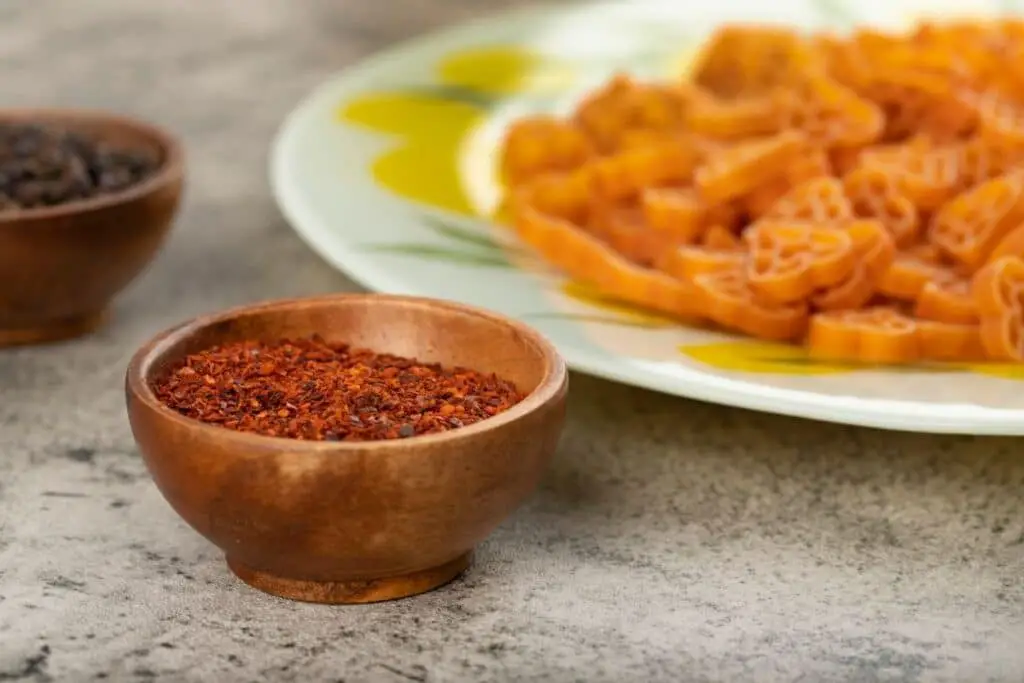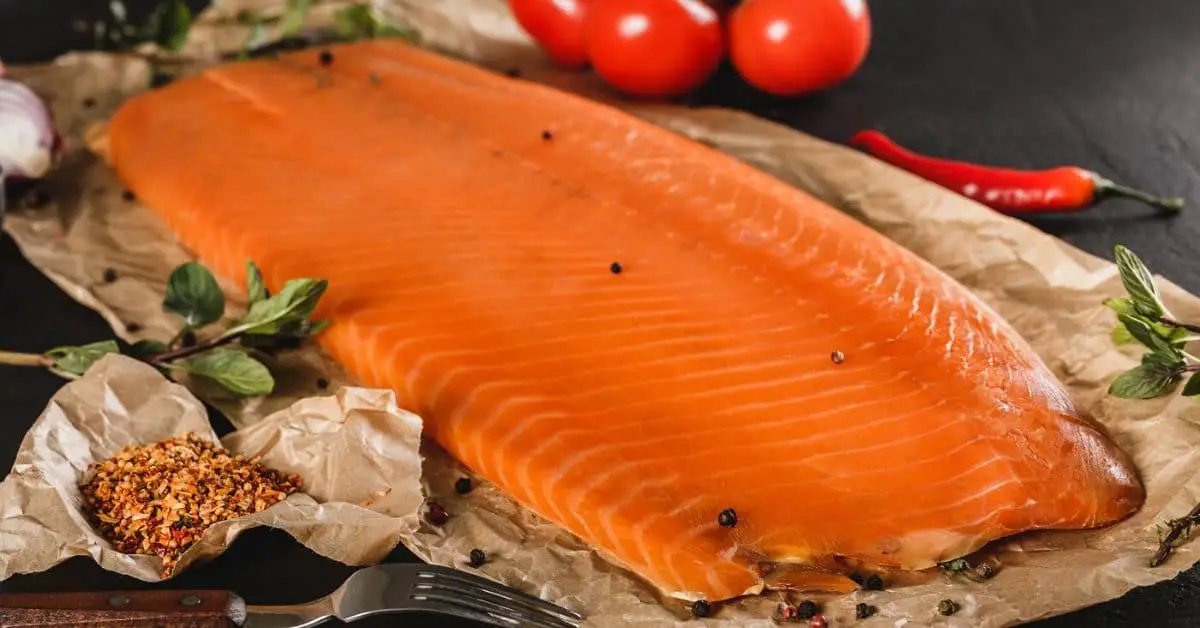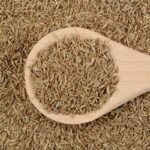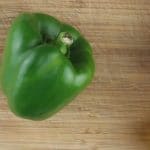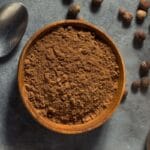In summary: There are some of the best substitutes for chili powder such as ancho peppers, homemade chili powder mix, paprika (especially smoked paprika), cayenne pepper, etc. Choose the substitute based on your recipe and taste preferences to achieve a similar flavor profile.
Using chili powder is an easy way to spice up any dish in an instant. From spice rubs and sauces to stews, dressings, chili, marinades, and soups, it can be added to almost any savory dish.
The ground peppers can be either a blend of spices or dried, ground chili on its own. If you need to kick up the heat but don’t have any on hand, we’ll guide you to pick the best chili powder substitute for an equally lip-smacking outcome of your favorite recipe.
What is Chili Powder?
Whether a combination of spices or containing chili peppers as a sole ingredient, the base of all types of chili powder is ground dried chili peppers, most commonly poblanos.
Poblano peppers have a mild heat compared to other types of chili, such as jalapeno. This makes it ideal for adjusting the heat level to your preference.
Once the peppers are dehydrated, they are referred to as ancho chilies so that you may see ancho chili listed as the ingredient in your spice blend as opposed to poblano. Essentially, they’re the same, except that one is dried and finely ground. Chili blends may also include onion powder, cumin, garlic powder, and salt.
If your recipe does not specify whether it requires a chili powder mix or ancho powder, you can often determine this by checking what other spices are mentioned in the ingredients list as well as the quantity required.
When your recipe calls for the spice in small quantities, such as one teaspoon, it generally refers to plain ancho powder. Larger quantities in stews and enchilada sauce most likely refer to the blend.
If the recipe also calls for cumin or garlic powder, keep in mind that a blend will already contain these spices, so don’t add them a second time if you are using a chili mix.
When choosing a substitute for chili powder, consider whether it is purely to add heat to your dish or to provide a fuller depth of flavor with a combination of spices. This will influence the substitute you choose.
Here are the best alternatives to chili powder and how to use them for the best results.
Best Substitutes for Chili Powder
Here’s what to use instead of chili powder when running out:
1. Ancho Peppers
To spice up any dish, using ancho chile powder is the perfect chili powder substitute since it forms the base of most chili spice blends. If you have whole ancho peppers, you can grind them in a spice grinder or clean coffee grinder. This will have a more potent heat than store-bought varieties and is also not tamed with other spice and herb additions.
Quantity: Start by adding only half the amount of ground pepper required, and slowly adjust to taste if you want to intensify the spicy flavor.
Best for: Mexican dishes, sprinkling on potatoes, vegetables, pasta, and popcorn. It is also ideal for seasoning chicken and stews.
2. Homemade Chili Powder Mix
Making your own chili powder seasoning is another good replacement for chili. The great thing is that you can tailor it to exactly the heat and flavor profile you like.
To make your own homemade chili pepper powder, start with a ¼ cup paprika or ancho chili powder as the base, depending on what you have available. Mix in two teaspoons ground cumin and two teaspoons dried oregano powder.
Add one tablespoon each of garlic powder and onion powder. Optionally, add a little cayenne powder to the blend to taste. This will give it a kick and round off the depth of flavor. If you don’t like your spicy food too hot, just a pinch will do.
Make sure the spice mix is well blended and store it in an airtight container in a cool dark place such as your pantry or spice rack.
Quantity: Replace in equal quantities.
Best for: Mexican cuisine, taco seasoning, marinades, curry, sauces, stews, chili, vegetables, seasoning meats, and chicken seasoning.
3. Paprika
As a chili powder alternative, paprika has a similar appearance. The dried and ground peppers do, however, come in different varieties, including sweet paprika and smoked paprika.
Smoked paprika is the best option to provide the same smoky notes, although it has a milder intensity. Sweet paprika will add a slight sweetness to your dish and not the smoky, spicy depth you’re after, but it can still be used if it’s all you have.
Quantity: Replace in equal quantities.
Best for: Stews, marinades, sauces, soup, chili, vegetables, meat, and chicken seasoning.
4. Cayenne Pepper
If heat is what you’re after, this is a great option for you. Cayenne pepper has a similar appearance but a whole lot more heat.
Add it in small quantities to prevent drowning out all the other flavors in your dish. Wait a minute before adding more, as the heat can take time to build up. Cayenne mixes well with other spices such as onion and garlic, so feel free to make a blend.
Quantity: Start with only a quarter of the initial amount and slowly build up from there.
Best for: Stews, chili, soup, vegetables, egg dishes, hummus, and curry.
Related: Substitute for cayenne pepper
5. Cumin
If you’re cooking Mexican but don’t have chili powder, grab the cumin instead. Although it won’t offer exactly the same profile, it will steer your dish in the right direction.
Quantity: If you substitute cumin on its own, use twice the amount required. If you’re blending cumin with onion and garlic, use equal amounts of cumin and then add in the additional spices.
For example, if you’re replacing one teaspoon, use one teaspoon of cumin instead with half a teaspoon each of garlic and onion powder.
Best for: Mexican and Tex-Mex dishes.
Related: Cumin replacement
6. Red Pepper Flakes
Red chili pepper flakes are made from a variety of peppers that are dried and crushed but not ground up. They often contain small red chili flakes and seeds and have a good level of spiciness. If you don’t want the flakes visible, you can grind them in a spice or coffee grinder.
Quantity: Replace the flakes in equal measure. If you are grinding them up, measure out the flakes before grinding.
Best for: Pizza, dressings, sauces, stews, chili, meat seasonings, and marinades.
7. Garlic and Onion Powder
Neither onion powder nor garlic powder on its own will bring the same level of heat to your dish. Since they are both ingredients that make up a chili powder blend, they will, however, bring similar flavor notes. Keep in mind that garlic powder, although not terribly hot, does have a strong flavor that can easily overpower other accents in the dish.
Quantity: To replace 1 teaspoon, use ½ a teaspoon of garlic powder combined with ¼ teaspoon of onion powder. If you have cayenne or paprika, add it to the blend.
Best for: Stews, meat seasonings, and marinades.
8. Chili Sauce
Chili sauce is a combination of vinegar, chilies, and sugar to create a thick spicy liquid great for adding to dishes or simply as a finishing touch over dishes.
They come in a range of strengths and vary in sweetness, so make sure you taste the sauce before adding it to your dish to make sure the chili flavor profiles match and that the level of sweetness is appropriate.
Sweet chili sauces, for example, are delicious with stir fry and marinades since they add a salty, spicy, and sweet flavor. However, they may not be ideal for replacing ground chilis in curry powders.
Quantity: Add to taste
Best for: Vegetable, chicken and meat dishes, pizza, noodles, stir fry, egg dishes, stew, sauces, and chili.
9. Hot Sauce
Hot sauces include chilies and vinegar but are also combined with a range of other flavors. They come in a variety of flavors, colors, viscosity, and taste profiles, from fruity to salty and acidic. If you have your favorite hot sauce in the pantry, you can use it as a substitute, but make sure the spicy taste in the sauce matches the profile of your dish. Non-vinegar-based sauces are generally best used as a replacement.
Quantity: Start with only a few dashes and slowly add to taste. The amount you use will depend largely on the heat level of the sauce.
Best for: Vegetables, chicken, and meat dishes, stir fry, egg dishes, stew, sauces, pizza, noodles, and chili, depending on the sauce type.
10. Gochugaru
Gochugaru is a Korean version of crushed red pepper flakes or can be used as a powder. The powdered form varies from mild to hot and has a strong smoky accent which can end up affecting your dish.
Substitute chili powder in equal quantities.
Best for: Meat dishes, stews, dipping sauces, dressings, kimchi, and marinades.
FAQ
Conclusion
Chili powder adds both a spicy kick and rich flavor to a great range of savory dishes. When choosing the best chili powder replacement, always consider how much heat the substitute will bring and whether the taste of your dish will be affected.
The spiciness in any dish can be very subjective. What may seem mild to you could be extremely spicy to someone else.
The best way to achieve the perfect balance is to start small and gradually add more spice to the taste. Not doing this can easily cause the heat, garlic, or onion taste to overpower everything else. It is also great to experiment with different spices in your cooking – you may just find a new combination you love more than the original.
*image by azerbaijan_stockers/depositphotos
